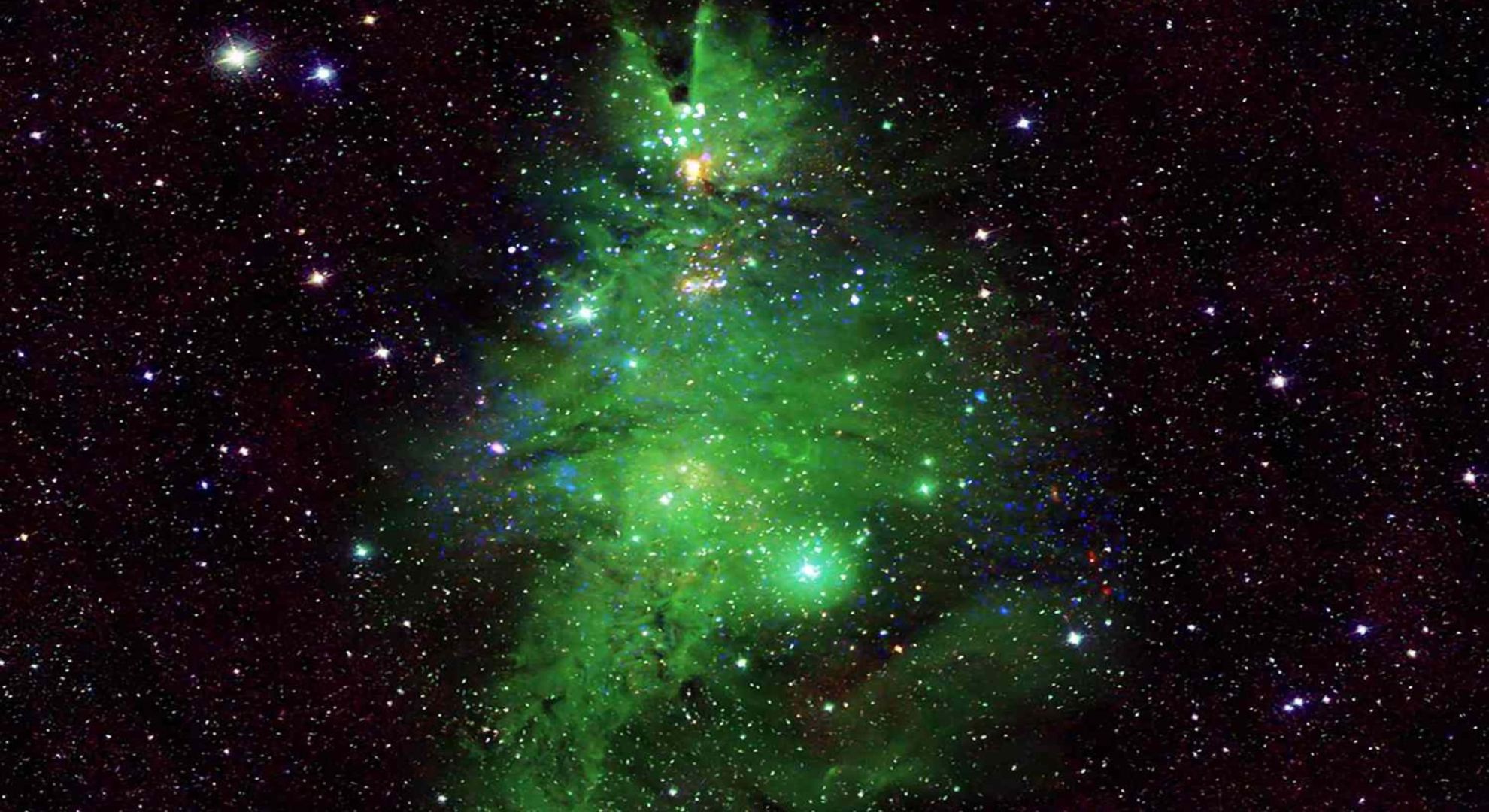This holiday season, a large green Christmas tree adorned with sparkling lights isn’t limited to your family’s living room. NASA has found a celestial counterpart in space – a glowing cosmic tree for the festive occasion.
NASA announced the discovery of NGC 2264, a cluster of young stars strikingly resembling a Christmas tree surrounded by bright lights. Located in the Milky Way, about 2,500 light-years away from Earth, the “Christmas Tree Cluster” consists of stars aged between 1 and 5 million years old.
“It’s beginning to look a like cosmos,” NASA joked in a tweet about the cluster.
It's beginning to look a lot like cosmos. 🎶
Our @ChandraXray Observatory recently spotted the blue-and-white lights that decorate the "Christmas Tree Cluster," a swarm of stars and gas some 2,500 light-years from Earth: https://t.co/VT2WaLgp77 pic.twitter.com/HrnrmxRyd7
— NASA (@NASA) December 19, 2023
A composite image transforms NGC 2264 into a Christmas tree, according to NASA, featuring a bright green glow and what appears to be blue and white twinkling lights. Contrary to the festive decorations, the green glow represents gas, and the blue and white sparkles indicate young stars emitting X-rays.
“The blue and white lights are young stars that give off X-rays detected by NASA’s Chandra X-ray Observatory,” the agency added. “Optical data from the National Science Foundation’s WIYN 0.9-meter telescope on Kitt Peak shows gas in the nebula in green, corresponding to the ‘pine needles’ of the tree, and infrared data from the Two Micron All Sky Survey shows foreground and background stars in white.”
NASA characterized young stars, such as those in this cluster, as “volatile” and capable of “undergoing strong flares in X-rays and other types of variations seen in different types of light.” An animated version of the composite image features blinking lights, but it was artificially generated to highlight the locations of stars observed in X-rays.
“In reality, the variations of the stars are not synchronized,” said the agency.
NASA unveiled the new image shortly after the James Webb Space Telescope and Hubble Space Telescope made their own holiday discovery – a “Christmas Tree Galaxy Cluster” situated roughly 4.3 billion light-years away from Earth. This finding stands as one of the most detailed views of the universe ever captured.
“We’re calling MACS0416 the Christmas Tree Galaxy Cluster, both because it’s so colorful and because of these flickering lights we find within it,” said astronomer Haojing Yan, one of the study authors. “We can see transients everywhere.”
Embracing the festive spirit, NASA’s website also posted an image of the dwarf galaxy UGC 8091, looking like a “sparkling snow globe.” This enchanting visual was created using data from the Wide Field Camera 3 and the Advanced Camera for Surveys through the Hubble Space Telescope.
Other POP! stories that you might like:
NASA streams cat video from deep space via laser
Keeping secrets to yourself can be energizing, says study
BTS Jimin’s new single ‘Closer Than This’ leaves fans emotional
Golden mole species thought to be extinct rediscovered in South Africa after 86 Years



